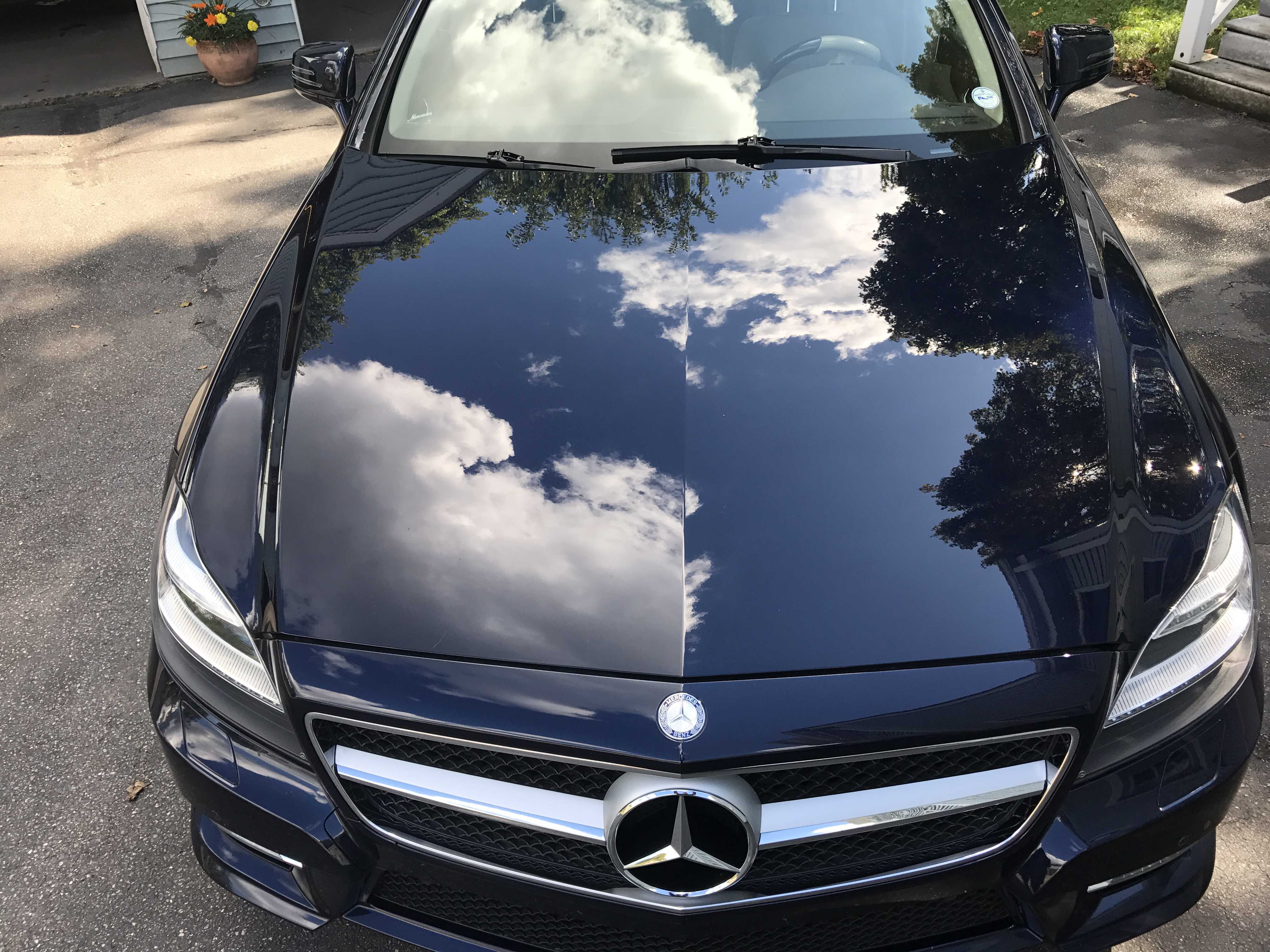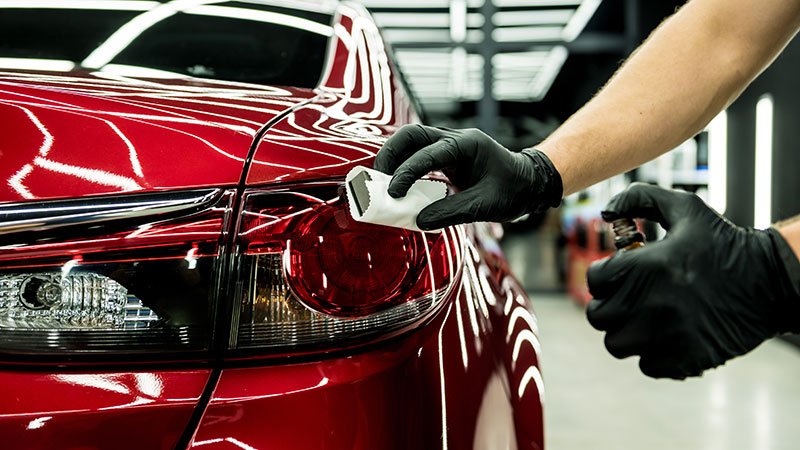Leading Reasons to Choose Ceramic Coating for Your Auto's Paint Protection
When considering the finest methods for safeguarding your vehicle's paint, ceramic finish arises as a notable choice due to its impressive toughness and progressed safety functions. What might these benefits entail for your lorry?
Superior Longevity
When it concerns car paint protection, ceramic finishes attract attention for their superior longevity. Unlike traditional wax or sealants, which might provide restricted defense and call for constant reapplication, ceramic finishes develop a robust, long-lasting barrier against ecological impurities. Composed of innovative nanotechnology, these finishings bond with the vehicle's clear layer, forming a safety layer that can withstand the rigors of daily use.
One of the most substantial advantages of ceramic finishes is their resistance to scratches, chips, and other physical damage. This boosted strength helps keep the car's aesthetic appeal with time, ultimately adding to higher resale values. Additionally, ceramic coverings display exceptional chemical resistance, shielding the paint from unsafe substances like bird droppings, tree sap, and road salts.
Furthermore, the hydrophobic buildings of ceramic coverings ward off crud, dirt, and water, making the vehicle much easier to maintain and clean up. Therefore, auto proprietors can appreciate a constantly polished appearance without the requirement for frequent outlining. This mix of durability, ease of upkeep, and long-term protection makes ceramic layers a wise financial investment for any type of vehicle proprietor seeking to maintain their cars and truck's coating.
Boosted UV Security
Giving enhanced UV defense is among the crucial benefits of ceramic finishes for automobile paint. Ultraviolet (UV) rays can trigger significant damages to a lorry's outside, causing discolored shades, oxidized surface areas, and compromised paint honesty in time. Ceramic finishings create a durable protective layer that works as a barrier versus harmful UV radiation, making sure that the underlying paint continues to be intact and vibrant.
The sophisticated formula of ceramic finishings includes specialized compounds that mirror UV rays rather than absorbing them. This reflection minimizes the potential for damages, permitting the paint to maintain its original sheen and gloss. Automobiles treated with ceramic coatings are less at risk to the typical problems linked with prolonged sunlight direct exposure, such as discoloration and clear layer deterioration.
In addition, this safety feature not just boosts the aesthetic allure of the automobile but likewise adds to its resale value. Purchasers are often prepared to pay a premium for vehicles that exhibit unspoiled paintwork, free from sun-related deterioration. In recap, improved UV security offered by ceramic finishings is an essential consideration for any cars and truck owner looking to safeguard their investment and preserve the lorry's look over the long-term.
Easy Upkeep

Additionally, ceramic coverings provide a robust barrier versus impurities such as bird droppings, tree sap, and road debris. These materials are less likely to abide by the paint, enabling for less complicated elimination throughout washing. Because of this, automobile proprietors can take pleasure in a cleaner automobile with much less constant washing compared to typical wax or sealant options.
Additionally, the resilience of ceramic coatings implies that they can last for several years with appropriate treatment, removing the need for frequent reapplication. This lasting security translates to reduced time and effort invested in maintenance, inevitably conserving auto proprietors both money and time.
Essentially, selecting ceramic coverings boosts not only the automobile's appearance however also the general upkeep experience, making it an intelligent option for those looking for optimal paint defense.
High Gloss Finish
A striking high gloss coating is one of one of the most popular outcomes of applying a ceramic finish to a car's paint. This glossy layer not just improves the visual allure of the automobile but additionally provides a deepness and clearness that is commonly unrivaled by traditional waxes or sealers. The sophisticated technology behind ceramic coatings permits for a smooth, reflective surface that accentuates the vehicle's color and shapes.

Furthermore, the enhanced gloss is not almost appearances; it likewise symbolizes a protective layer that defends against UV rays, oxidation, and other dangerous components. As an outcome, this coating not just boosts the lorry's visual appeal but likewise adds explanation to the durability of the paint, making ceramic layer a preferred choice among automobile fanatics and day-to-day motorists alike.
Cost-Effective Investment
Frequently considered as an economical investment, ceramic finishing supplies substantial long-term financial savings for automobile proprietors. While the preliminary application cost might appear higher than typical wax or sealers, the sturdiness and protective top qualities of ceramic finishes can result in substantial financial savings in time. Unlike conventional items that require constant reapplication, ceramic finishes can last for several years, lowering the requirement for ongoing upkeep costs.
Additionally, the safety barrier created by ceramic coatings guards the automobile's paint from hazardous elements, such as UV rays, toxins, and bird droppings, which can cause expensive paint repairs and corrections. By avoiding such damages, ceramic finishings can maintain the lorry's visual appeal and resale worth, making it an economically sensible option for auto lovers and day-to-day chauffeurs alike.
In addition, the ease of upkeep offered by ceramic finishings suggests that routine cleaning is simplified, conserving both time and initiative. In general, buying ceramic coating not just enhances the lorry's appearance but also offers as a calculated financial choice, allowing proprietors to enjoy their automobiles without the burden of regular repairs or replacements.
Verdict
The lasting advantages of ceramic finish prolong to cost-effectiveness, as it assists maintain the vehicle's worth over time. Ultimately, the combination of these benefits makes ceramic covering a prudent financial investment for cars and truck owners looking for ideal paint security.
When thinking about the best approaches for safeguarding your vehicle's paint, ceramic layer arises as a noteworthy alternative due to its exceptional sturdiness and progressed protective features. ceramic coating. In recap, enhanced UV security offered by ceramic layers is a crucial consideration for any kind of automobile proprietor looking to secure their financial investment and preserve the lorry's appearance over the lengthy term
